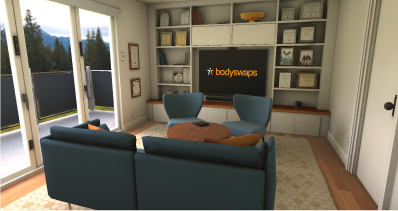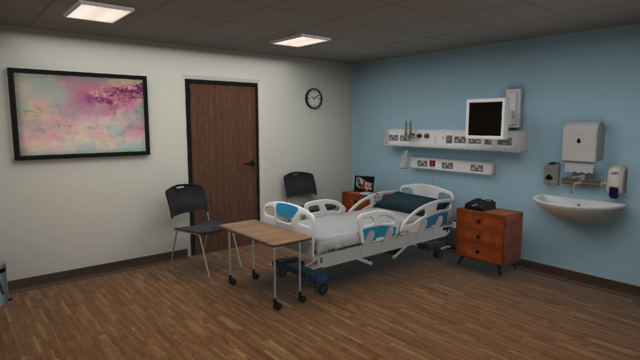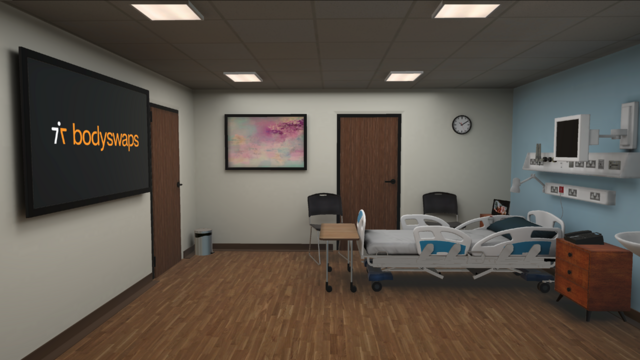Communicating in a Person-Centred Way: Getting to Know Each Individual
Tutor Notes
Health and Social Care is an extremely broad area covering a huge variety of different roles, care settings, and types of people that support workers might be caring for. But, whoever you’re caring for and wherever they are, there’s one thing they all have in common – they’re people.
This immersive training module supports learners working towards their Care Certificate by giving them a glimpse into what it’s like to care for different people and by helping them develop the essential communication skills they’ll need to do that job well.
Through these activities, learners will explore the ways in which taking the time to get to know each individual and communicating with them in a person-centred way can improve their care in so many ways, big or small.
About this resource
Key learner outcome and goals
Learning Outcome
Learn to discover each person you care for as an individual
Learning Goals
- See the benefits of getting to know each person you care for as an individual
- Support a sense of identity to build self-esteem
- Find out the individual’s history, preferences, wishes, and needs
A word about terminology
As a medium, Virtual Reality is not best suited to didactic teaching methods.
However, our intention is that all Bodyswaps modules follow a student-centred constructivist pedagogy. This means creating rich experiences in which learners can explore key concepts and ideas and reach their own conclusions.
This is why our documents speak in terms of learning goals and outcomes, rather than measurable ‘learning objectives’ (a la Bloom’s Taxonomy) per se.
Module structure
The complete journey takes the learner through 4 topics, led by virtual coaches Nola and Abeeku, as well as ancillary activities such as onboarding, self-reflection, and the exit survey.
It is a linear experience, meaning the learner will be guided step by step through all the activities by the coaches.
We recommend that learners fully interact with each activity to get the maximum benefit.
It is estimated that each topic will take the learner approximately 5 minutes to complete, although completion times vary depending on whether the learner chooses to repeat topics to explore different options (encouraged) or fine-tune their freeform responses.
Learner Journey
.svg)
.svg)
.svg)
.svg)
.svg)
.svg)
.svg)
.svg)
Characters
.webp?width=720&height=1050&name=abeeku%20(1).webp)
.webp?width=720&height=1050&name=nola%20(1).webp)
Nola
Virtual coach.webp?width=720&height=1050&name=tula%20(2).webp)
Sandra
Hospital patient.webp?width=720&height=1050&name=ameera%20(2).webp)
Ameera
Hospital patientLearning Environments

Tutor Room - Bodyswaps HQ

Sandra’s hospital room

Ameera’s hospital room
Purpose
Familiarise learners with the controls and navigation
Location
Characters
N/A
Duration
3:00
The first time learners use Bodyswaps, this onboarding sequence familiarises them with the features of the app, takes them through an avatar selection and embodiment activity, and prepares them for the experience to come.
In the onboarding, learners will:
- Find out how this training is different from the rest
- Select their avatar
- Discover their virtual journal
- Learn how to navigate and use the tools and settings
Purpose
Introduce the module and reflect on current confidence levels before beginning the activities
Location
Tutor room
Characters
Abeeku and Nola
Journal
Duration
Good person-centred communication can make someone’s day – but it can do a lot more than that too! It can also make a big difference to the person’s quality of care and even their health. As support workers, learners are in a really good position to be the one to trigger that change.
The module begins with a short introduction from coaches Abeeku and Nola (support workers in healthcare and social care respectively), who establish what person-centred communication is and why it’s so important.
Then, the coaches invite the learner to complete a short likert-style self-reflection survey, to indicate how confident they feel about the following key learning points:
- Getting to know each person in your care as an individual
- Discovering their history, preferences, wishes, and needs
- Supporting their sense of identity to build self-esteem
These self-reflection questions will be repeated in the debrief at the end, to assess how the learner’s confidence levels have changed.
Note: If you wish to receive data about how the learner’s confidence levels have changed as a consequence of the training, it’s important that they complete this introduction and the debrief at the end.
Purpose
Reflect on how well you currently follow the person-centred values
Location
Tutor room
Characters
Nola and Abeeku
Journal
Duration
Abeeku and Nola begin the module with an example of how taking the time to communicate in a person-centred way can benefit the people you care for. During the discussion, they remind the learner of the eight person-centred values: Individuality, Choice, Independence, Rights, Privacy, Dignity, Respect, and Partnership.
In this diagnostic activity, the coaches ask the learner a series of six quickfire scenario-based questions to see what they would do in different situations where person-centred communication would help.
The questions are all three-option multiple choice, with one person-centred response and two not person-centred responses. A gauge on the screen behind the coaches gives real-time feedback so the learner can see how they are doing.
At the end of the activity, the coaches provide personalised feedback and encouragement based on the learner’s outcome.
They then wrap up the first topic with a quick discussion around why following the person-centred values are so important when delivering health or social care – they’re crucial for supporting each person’s unique identity and sense of self-esteem. Finally, the coaches reinforce the important point that you’re not expected to be able to handle everything you learn about yourself. If a person in your care reveals something that you can’t fix on your own, all you need to do is report it to the person in charge of their care.
Purpose
Understand how to explore each individual’s unique characteristics for delivering effective care
Location
Sandra’s hospital room
Characters
Abeeku, Sandra
Duration
To show the learner how this looks in practice, Abeeku takes them to his workplace, where they watch him introduce himself to a patient, Sandra.
Sandra is recovering from an operation and has been feeling very lonely. In this observation activity, the learner watches Abeeku interact with her and clicks or taps to identify instances of person-centred communication.
Visual feedback is provided in real-time to indicate whether the learner has correctly identified each of the six examples of Abeeku’s person-centred communication.
As the activity progresses, the learner witnesses Sandra responding in a positive way to Abeeku’s efforts and beginning to open up. By the end of their conversation, Abeeku has learned some important new information that will help improve Sandra’s care moving forward.
At the end of the activity, the learner receives feedback about each of the six points, including a summary of how Abeeku’s responses might help Sandra and what Abeeku could have missed if he hadn’t taken the time to adopt a person-centred approach.
For example, when Abeeku asks Sandra what she’s looking forward to when she goes home, she reveals that she thinks she’ll feel better because she’s having an allergic reaction to something in her hospital room. This leads Abeeku to discover a pollen allergy, so he closes the window and promises to check with the nurse about getting Sandra some allergy medication.
Purpose
Understand how person-centred communication can improve care
Location
Tutor room
Characters
Nola and Abeeku
Duration
7:00
It’s time for the learner to meet their own patient, Ameera. But before they do, Nola and Abeeku share some notes from her care plan: Ameera has recently had a life-changing spinal injury and is now a wheelchair user. She’s trying to adapt to her new reality, but is finding it hard.
In this scaffolded conversation, the learner chooses how to respond to Ameera in a sequence of six multiple-choice exchanges. At each stage, the learner must select the person-centred option in order for Ameera to open up and reveal one of six new pieces of information:
- Ameera has been experiencing new pain in her chest and arms
- She’s been struggling to use her wheelchair, especially when getting in and out of bed
- Getting her catheter right and preventing leaks is something Ameera would like help with
- Ameera loves reading but keeps getting disturbed by a loud bin banging outside her room
- She would like some help to tie her hijab the way she likes it
- Her fear of needles comes from having veins that don’t admit the needle easily – she’s been given some advice about this recently
If the learner chooses one of the other two options, Ameera will give an emotional response only and won’t reveal that piece of information.
At the end of the conversation, Abeeku and Nola give some personalised feedback based on how many correct options the learner selected, before giving them the option to try again if they didn’t get the best response out of Ameera every time.
If the learner does not want to repeat the conversion, they’ll be given the opportunity to see a summary of all the information they might have uncovered – which they’ll need for the next activity.
Purpose
Understand how person-centred communication can improve care
Location
Tutor room
Characters
Nola and Abeeku
Journal
Duration
Now, Nola and Abeeku ask the learner to put themselves in Ameera’s shoes and reflect on how upsetting, disempowering and scary it must feel to be recovering from a life-changing injury.
They ask the learner to explain, in their own words, how they think the six new pieces of information they’ve uncovered about Ameera can be used to improve her care.
AI analytics pick up keywords that demonstrate the learner has understood how they can use each of the six facts to make things better for Ameera, whether it’s in a big way or a small one.
Learners receive feedback about the keywords they used, before the coaches wrap things up by talking through the various ways in which the learner’s person-centred communication will help Ameera.
For example, something you can immediately do is close the door to minimise noise from the corridor so that she can concentrate on her book. You can let others know about this preference too.
But not all of Ameera’s problems can be solved right away or by a support worker. Many of them – like her new pains, the difficulty she’s having with her wheelchair and catheter, and the reason for her fear of needles – should be reported to the person in charge of Ameera’s care so they can be added to her care plan.
Purpose
Debrief the learner upon completion of the training and prompt self-reflection
Location
Tutor room
Characters
Nola and Abeeku
Journal
Duration
Nola and Abeeku congratulate the learner on taking the time to learn about getting to know each individual.
Once again, they stress the importance of being curious and listening to what the other person tells you, then resolving what you can and referring what you can’t to the person in charge.
They remind the learner that they can make a big difference – to someone’s day, their care, or maybe even their condition – if they apply person-centred communication with the people they care for.
Finally, they repeat the self-reflection questions from the start of the module to see how the learner’s confidence has changed.
Note: With soft skills training, it is not unusual to find that learners’ confidence levels actually fall upon completion. This is because people are often overconfident in their ability to communicate or empathise before the training begins. As the experience raises self-awareness, confidence levels may fall in response.
Purpose
Assess the effectiveness of the training itself
Location
Characters
Journal
Duration
Before the learner leaves the module, they are asked to complete a short survey about their experience.
This survey is not compulsory, but the data helps us to assess the effectiveness of our product and identify any areas that need improvement. Clients also find it beneficial when assessing ROI.
They are asked to mark whether they agree or disagree with the following statements, on a 10 point scale:
- I would recommend this experience to others
- The experience helped me identify elements I could improve upon
- I have a better understanding of how to communicate in a person-centred way to get to know each individual
